|
Located at the meeting point of East and West is a city that spans two continents and two seas. It was the imperial capital of the Roman and Ottoman Empires. Few cities have a history as extensive and varied as İstanbul's. Many different civilizations have called İstanbul home, and each one has left their mark on the city. The three main periods of İstanbul's history are as follows: Pre-Roman, Roman, and Ottoman periods. 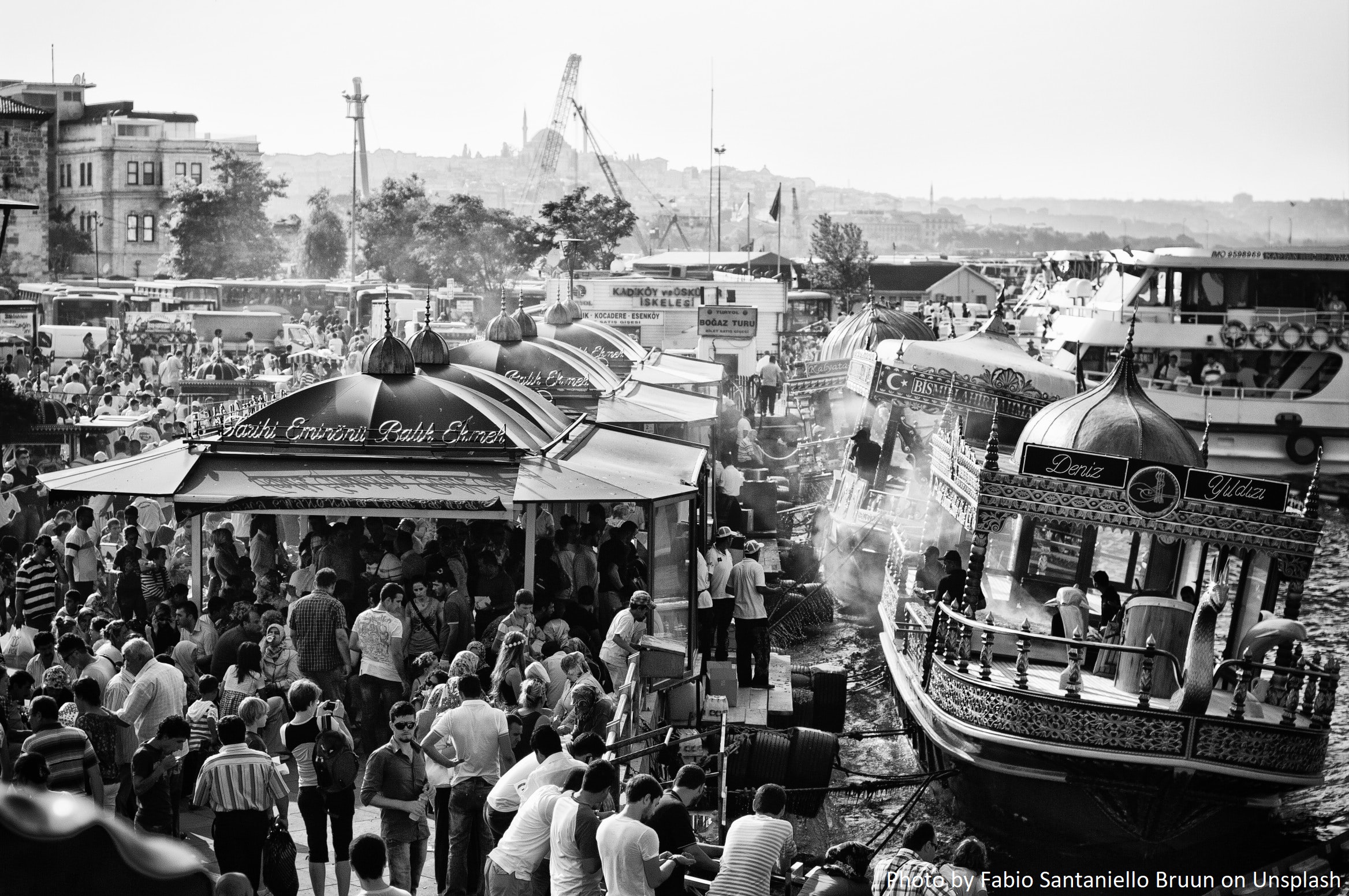 The earliest settlements in İstanbul may be traced back to the Neolithic era, about 8,000 years ago, according to archaeological artifacts. Thracians were the first culture to inhabit the city and gave it the name Lygos. On what is now known as Seraglio Point, Lygos was founded sometime in the 13th century BC. There isn't much information available about the Lygos period because much of the settlement is buried beneath the Topkapı Palace and just a few wall ruins remain. Like the majority of the towns in the Near East, Lygos was thought to have been destroyed by unidentified invaders during the Late Bronze Age Collapse. The Greek colonists created their colony "Byzantion," which was called after their monarch Byzas of Megera, when they arrived at the Seraglio Point in 657 BC. This was the beginning of Lygos' next prosperous phase. Byzantion, which was encircled by the ancient seas of the world, swiftly rose to prominence as a port city in the area because of Golden Horn, which served as a haven for trade ships. Greek settlers enjoyed peace and prosperity until the mid-6th century BC, when regional powers recognized the Byzantion's worth. When the city came under the control of the Persian Empire in 552 BC, it quickly rose to prominence as one of the strategic places for Persian Army operations in the area. Persian dominance continued until 478 BC, when Athenians and subsequently Spartans conquered the city, making Byzantium their client state. Serpent Column was built in the city to mark the triumph of the Greek city states against the Persian Empire. 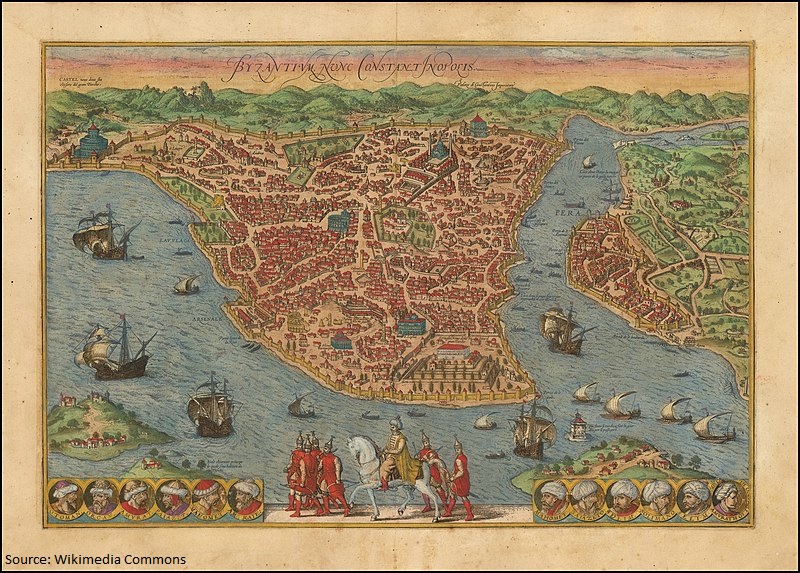 The rulers of Byzantium understood the increasing power of Rome circa 150 BC, and in exchange for their independence, they agreed to become a subordinate city to the Roman Republic. After a smooth transfer to Roman authority, Byzantion became stronger under the Pax Romana, which concerned Roman Emperor Vespasian, who sought to Latinize the city to enhance its ties to the Empire. Not only was the populace Latinized, but the city's name was Latinized and became Byzantium. The Roman Empire was in upheaval in 193 AD, often known as The Year of the Five Emperors, when five contenders claimed to be emperor. Among them, Byzantium backed Pescennius Niger's claims and served as a base for his expeditions. Septimius Severus, another claimant who emerged triumphant from the civil war, was enraged at Byzantium's treachery and ordered his men to raze all buildings in the city, including the city walls. When Severus returned to the capital, he grasped the city's value as a Roman outpost and ordered its reconstruction. New city walls, known as the Severan Walls, were erected further away from the ancient walls, allowing the city to flourish and expand. The Roman Empire was ruled by a system known as tetrarchy in the 4th century, in which the Empire's power was split among two major (Augusti) and two lesser (Caesares) tetrarchs/emperors, each of whom ruled separate regions of the Empire and so had separate capitals. Although Rome, the former official capital, maintained its position as the Empire's titular capital, each tetrarch used/built new capitals for themselves. Between 314 and 324 AD, two important tetrarchs, Constantine the Great of the West and Licinius of the East, battled each other. Constantine triumphed in the battle and became the only ruler of the Roman Empire. Constantine, who became a devout Christian in 312, regarded this result as "the victory of Christian Latin-speaking Rome over Pagan Greek-speaking East," and so desired to create a new capital, a New Rome, in the East, to consolidate the East's incorporation into the Roman Empire. Byzantium which was controlling access to the Black Sea and closely located to the Danube, one of the weakest links of the Roman border, made it a great candidate for being capital. Constantine ordered his capital to be built in Byzantium. The construction started in 324 AD and continued until 330 AD when Constantine announced his new capital “Nova Roma” with an official ceremony. The name Nova Roma was not sticked though as the city was always referred as Constantinople after the death of Constantine the Great. 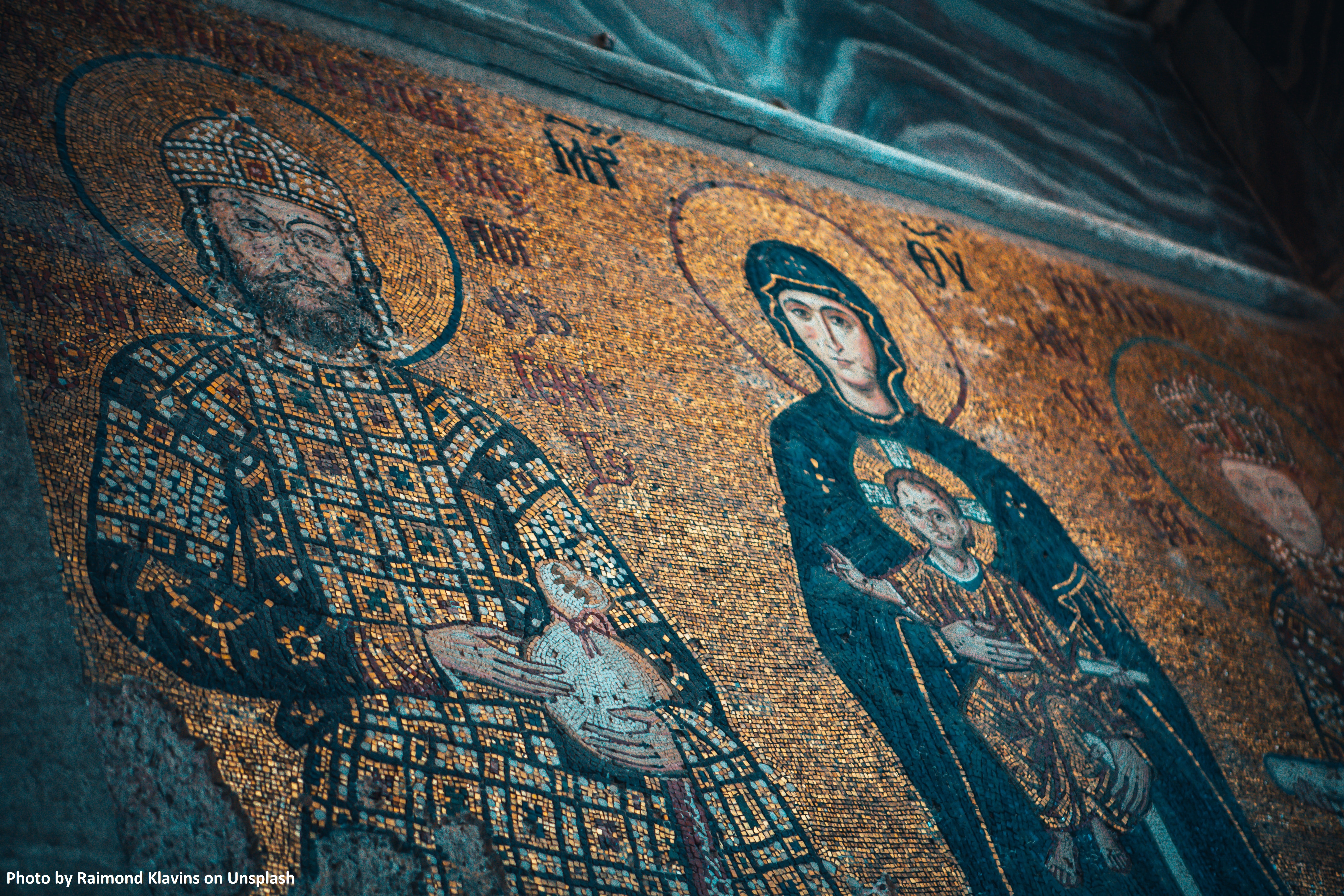 During the construction of Constantinople, the city was split into fourteen areas, each of which was embellished with public works. Constantine commissioned the construction of a new square for his new capital, Augustaion, now known as Aya Sofya Meydanı, as well as important architectural works to be built around it, including his imperial palace, senate building, and a hippodrome. Serpent Column was raised in this hippodrome, and afterwards, the Obelisk of Thutmose III, an ancient Egyptian obelisk transported from the Temple of Karnak, and a walled obelisk were erected in this region. All of these structures have survived and may be seen today at Sultanahmet Square. The Severan Walls, on the other hand, were dismantled and new walls, subsequently known as the Constantinian Walls, were built further west to allow the city to expand. The next era of growth occurred between 414 and 415 AD, under the reign of Theodosius II, when new triple-wall defences were built in what is now known as the Topkapı area. Some of these fortifications are still standing to this day. Meanwhile, the Western Roman Empire was being conquered by barbarian tribes, resulting in the Eastern Roman Empire becoming the only seat of the Roman Empire and directing all riches across the Empire to Constantinople. With a population of about 500,000 people during Justinian I's reign, the city was booming. During this time, chariot racing, which had previously been only a form of public amusement, evolved into a major political arena for the people, who were split into two teams, the Blues and the Greens. In 532 AD, political tensions between Blues and Greens erupted into an all-out uprising, and one of the city's most famous landmarks, Hagia Sophia Basilica, was set ablaze. Emperor Justinian, a Blues fan, was considering departing the city for fear of his life. However, his wife, Empress Theodora, persuaded him to stay and fight. The emperor ordered his generals to suppress the insurrection by whatever means necessary, resulting in the deaths of 30,000 unarmed citizens. Following the uprising, Justinian desired to reconstruct the Hagia Sophia Basilica in a manner that reflected the scale of his authority. As a consequence, the current Hagia Sophia building was completed in five years and inaugurated in 537 AD. For over a thousand years, until the completion of Seville Cathedral, the Hagia Sophia was the largest cathedral building in the world.  In the sixth and seventh century, the city was besieged by Avars and Bulgars in the west and Arabs and Persians in the east. Due to limited land and sea access, food reserves were exhausted during this era, causing turmoil among people and a steady drop in city population, which was eventually recovered in the ninth and tenth centuries. During the eighth and ninth centuries, damage occurred from inside with iconoclast movements. The worship of idols, images, and statues was prohibited by successive emperors Leo III, Constantine V, and Leo IV, resulting in the destruction of many mosaics and reliefs in the buildings. The city was shocked along with the rest of the empire in the 11th and 12th centuries when Turkic tribes began to expand on the Anatolian Peninsula and in just 10 years came extremely near to Constantinople. In times of turbulence, Alexios I appealed to the West for assistance, and the West responded with crusaders to cleanse Anatolia of Turkish influence and reclaim sovereignty of the Holy Cities in the Levant. Several crusades with varying intentions were planned over the following hundred years, but it was the Fourth Crusade that sealed Constantinople's destiny. The Fourth Crusade was intended to retake Jerusalem, but on their route, crusader soldiers struck an agreement with Alexios IV to reenthrone his father Isaac II in exchange for military and financial assistance from Alexios IV for the crusade. After a brief siege in 1203, Isaac II was liberated from jail and re-established himself as Emperor, with Alexios IV as co-emperor. However, Alexios IV was deposed and subsequently assassinated during a rebellion in 1204, which meant that the crusaders would not receive the financial help that Alexios had promised. In a fit of rage, crusaders began plundering the city for three days, which became known as the Sack of Constantinople, destroying or stealing every valuable item. Many antique or medieval Greek and Roman works that had survived to that point had been demolished. Among the plundered items were bronze hippodrome horses, which were moved to St. Mark's Basilica in Venice, bronze plaques from the Walled Obelisk, and a bronze statue of Hercules. The entire worth of plundered items was around 900,000 silver marks, which equates to approximately £ 435,000,000 today. 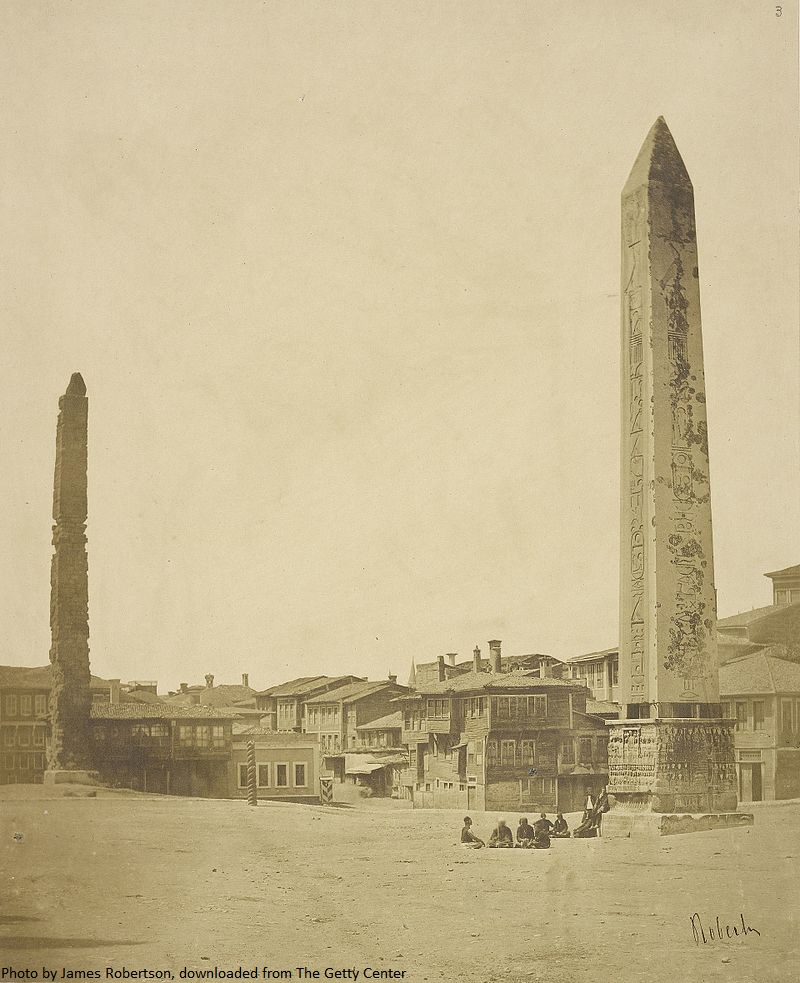 Until 1261, Constantinople was under Latin domination. During this time, the city lost its previous splendour as citizens from both the poor and upper classes departed, resulting in a large depopulation that finally led to the loss of numerous structures due to neglect. When Emperor VII retook the city, the population had fallen to 35,000, which he barely managed to increase to 70,000. However, the city was still subjected to a number of natural disasters, plagues, and sieges. Eventually, in 1453, the city was conquered by Ottomans who breached its impenetrable walls using sophisticated gunpowder technology of the day. Following the conquest of the city, Ottoman Sultan Mehmed the Conqueror relocated his capital from Adrianople to Constantinople, also known as Konstantiniyye by the Ottomans. The Sultan, according to history, permitted the Janissaries, an elite Ottoman Corps, to loot the city for three days following the capture because the city refused to submit three times. Mehmed, fearful of the devastation that would be done to his new capital, prohibited the destruction of buildings during pillage. Mehmed began reconstructing the city to its former splendour in the years that followed. Along with new constructions, certain existing buildings, including churches, were refurbished and many of them transformed into mosques, the most renowned of which was Hagia Sophia. The city walls were also rebuilt, and new palace buildings were constructed. He intended his new capital to be a multiethnic, cosmopolite entity, so he summoned artisans and academics to Konstantiniyye and issued orders relocating designated Muslim, Christian, and Jewish families. The Grand Bazaar, the world's biggest covered market for centuries, was built during this period to make Konstantiniyye the commercial hub. During the reign of Suleiman the Magnificent in the 16th century, the city achieves its zenith. Non-dynastic upper-class households could finance large construction projects such as mosque complexes, schools, inns, public baths, and so on. The majority of the structures in this era were designed by Mimar Sinan, the principal architect. Both in terms of number and quality, Sinan's works were at the pinnacle and had an impact on both Ottoman and contemporary Turkish architecture. Despite several natural disasters and epidemics during the next centuries, the city managed to retain its grandeur. As part of the reform movements in the early nineteenth century, a municipality was founded, and the city was restructured according to western standards. During the same time period, western-style structures such as Selimiye Barracks, Dolmabahçe Palace, Çırağan Palace, Ortaköy Mosque, and others were built. From the 17th through the 19th centuries, the city was known by a variety of names, including İstanbul, Der-Saadet, Bab-ı Ali, and Payitaht. Among them, İstanbul was the most well-known to the general population, as pre-conquest Greek citizens referred to the city as is-tim-polis, which means "to the city." This name evolved through time to İstanbul, which became the city's official name with the Ottoman Constitution of 1876. Following World War I, allied forces captured İstanbul, resulting in the installation of a new administration in Ankara. Following the victorious Turkish War of Independence, Ankara was declared the new capital of Turkey, thereby ending the İstanbul's capital position that had existed for about 1500 years. However, İstanbul's development was not significantly hampered by losing its capital status because the city continues to uphold its crucial position as a crossroads between the east and west and north and south. İstanbul is now the biggest city in Europe, with a population of over 16 million and an estimated economic worth of $237 billion, or about one-fourth of the Turkish economy. 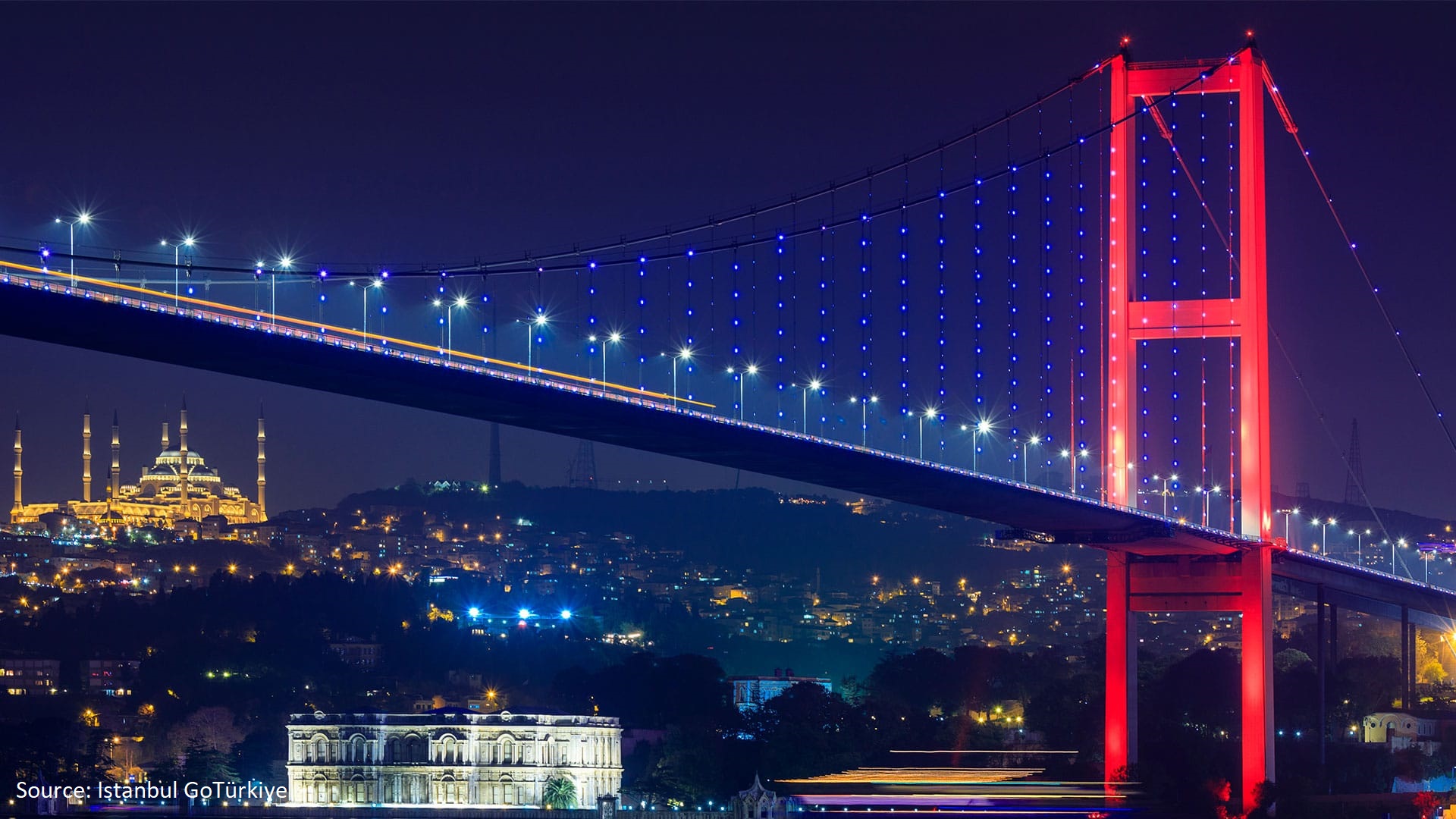
|